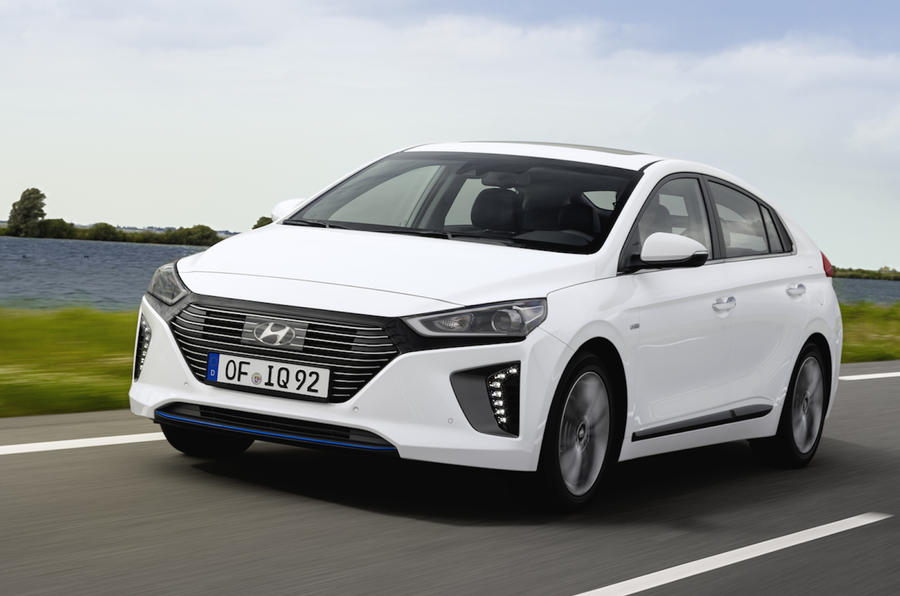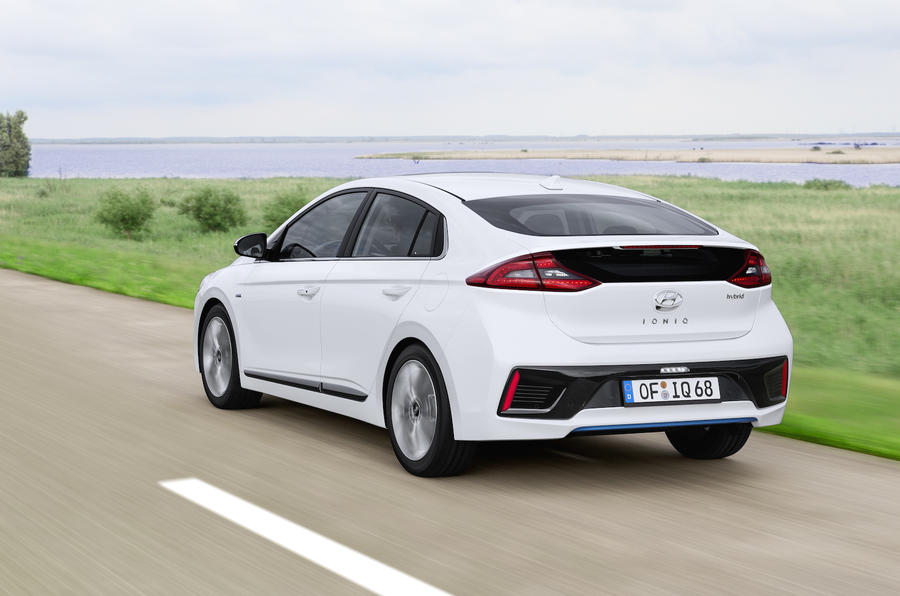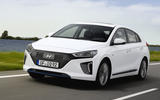What is it?
The Hyundai Ioniq is something of a trailblazer; it’s the first car to be offered in three electrified states. There’s a pure EV model capable of 174 miles on a charge, a petrol-electric parallel hybrid model that we’re driving here and a plug-in hybrid that will arrive in 2017.
It’s all part of Hyundai’s intention to have as many as 28 ‘eco-friendly’ models on sale by 2020, and its hybrid certainly fits that bill. It features a modified 104bhp version of Hyundai’s 1.6-litre Kappa petrol engine, which, thanks in part to its Atkinson cycle, now has 40% thermal efficiency - around 15% better than the traditional Otto cycle.
Stored beneath the rear seats is a 1.56kWh battery, which, via an electric motor, takes maximum combined power to 139bhp and combined twist to 195lb ft. Unlike the Ioniq's main rival, the Toyota Prius, Hyundai as opted for a specially developed six-speed dual-clutch automatic transmission instead of a CVT unit, too.
Because its engine, clutch, electric motor and gearbox are mounted on one common shaft, Hyundai has been able to keep packaging and weight to a minimum. The result of all these efforts is CO2 emissions of as low as 79g/km and official fuel economy of as high as 83.1mpg should you choose the right trim and therefore the right alloy wheels with eco tyres.
What's it like?
Not surprisingly, you don't come away from driving the Ioniq dumbfounded by scintillating dynamics, but then, that's not the point, and the same can be said of Toyota's Toyota Prius. For what it's worth, it is about as quick as a Prius on paper and probably just about feels so from behind the wheel.
Of greater note is the more agreeable way in which its power is delivered, via six ratios rather than via one continuous stream. It makes the Ioniq feel more responsive and does a better job of keeping its comparably whiny petrol engine in check under heavy throttle applications. Knocking the gear selector left into Sport mode forces it to hold on to low ratios for longer, causing more din.
There's very little enjoyment to be gained from the Hyundai's steering, though. There's a large dead patch around the straight-ahead to which a distinct weight is applied soon after - too much if Sport mode is engaged. Turn-in is relaxed and the rack's speed has clearly been designed to cope with city driving first and foremost, although there's no obvious shortage of grip at the front axle and the Ioniq's body remains nicely upright unless really hustled.
Again, the fact that the Ioniq isn't the last word in handling prowess comes as no surprise, but its ride quality has to be nearer the mark. Remember, thanks to firms such as Uber, more and more people are experiencing Toyota's Prius from the back seats - a more comfortable experience since Toyota's latest effort hit our roads.
The HEV Ioniq gets more advanced multi-link rear suspension than its pure EV stablemate, perhaps because Hyundai realises the rear seats will be used more often. The result is a largely compliant ride, both in the speed-bump primary sense and over broken asphalt. That said, hitting sharp expansion joints at speed causes obvious noise and slightly instability in the body at times.
The cabin space race probably goes to the Toyota - just. Both cars cater for a couple of tall adults well, and the same can be said of the rear seats, but the Toyota's slightly more generous knee room edges it the win. Boot space is a different story; the Hyundai offers more than 100 litres extra on paper, even if the space is rather shallow in reality. At least its rear seats split 60/40 and fold to give you the option of a deeper rear cabin.























Join the debate
Add your comment
Will it be as reliable as a Prius
This comment has no meaning to it
Naija Specs
Interesting